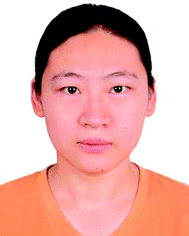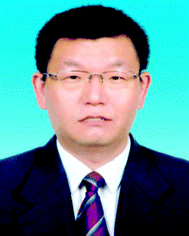Biological characterizations of [Gd@C82(OH)22]n nanoparticles as fullerene derivatives for cancer therapy
Jie
Meng
*a,
Xingjie
Liang
a,
Xiaoyuan
Chen
b and
Yuliang
Zhao
*c
aChinese Academy of Sciences Key Laboratory for Biomedical Effects of Nanomaterials and Nanosafety, National Center for Nanoscience and Technology of China, Beijing 100190, China
bLaboratory of Molecular Imaging and Nanomedicine (LOMIN), National Institute of Biomedical Imaging and Bioengineering (NIBIB), National Institutes of Health (NIH), Bethesda, MD 20892, USA
cChinese Academy of Sciences Key Laboratory for Biomedical Effects of Nanomaterials and Nanosafety, Institute of High Energy Physics, Chinese Academy of Sciences, Beijing 100049, China
First published on 13th August 2012
Abstract
Malignant tumor disease is one of the leading causes of human death in many countries. Currently, chemotherapy is considered highly efficient for cancer treatment. However, the clinical application of conventional chemotherapeutic agents is limited because of their high toxicity. With the development of nanotechnology, engineered nanomaterials have been widely and increasingly used in biomedical fields such as biomedicine. Thus, the use of engineered nanomaterials has become a promising approach to cancer treatment. Many newly fabricated nanomaterials with unique characteristics exhibit favorable therapeutic and diagnostic properties, implying their enormous potential as biomedical candidates. [Gd@C82(OH)22]n is a new type of metallofullerenol nanoparticle with high anti-tumor activity but low toxicity. In this article, the properties and biological effects of [Gd@C82(OH)22]n are summarized, and their possible mechanisms are analyzed.
 Jie Meng | Jie Meng received her PhD in nanomedicine from Chinese Academy of Medical Sciences & Peking Union Medical College in 2007. After her postdoc at Institute of High Energy Physics, CAS, she currently is a research associate of Key Laboratory for Biomedical Effects of Nanomaterials and Nanosafety, National Center for Nanoscience and Technology of China. Her research field is the application of nanoparticles and drug carriers in medicine. |
 Xingjie Liang | Dr Xingjie Liang got PhD at National Key Laboratory of Biomacromolecules, Institute of Biophysics at CAS. He finished his postdoc at Center for Cancer Research, NCI, NIH, and worked as a Research Fellow at Surgical Neurology Branch, NINDS. Dr Liang worked on Molecular imaging at School of Medicine, Howard University before he became a deputy director of CAS Key Laboratory for Biomedical Effects of Nanomaterials and Nanosafety, National Center for Nanoscience and Technology of China. Dr Liang is currently an editorial board member of “Acta Biophysica Sinica” and “Current Nanoscience” “Advances in Nano Research”. Developing drug delivery strategies for prevention/treatment of AIDS and cancers is a current program ongoing in Dr Liang's lab based on understanding of basic physico-chemical and biological processes of nanomedicine. |
 Xiaoyuan Chen | Xiaoyuan Chen received his PhD in chemistry from the University of Idaho in 1999. He joined the University of Southern California as an Assistant Professor of Radiology in 2002. He then moved to Stanford University in 2004 and was promoted to Associate Professor in 2008. In the summer of 2009, he joined the Intramural Research Program of the NIBIB as a tenured Senior Investigator and Chief of the Laboratory of Molecular Imaging and Nanomedicine (LOMIN). Dr Chen has published over 340 papers and numerous books and book chapters. He sits on the editorial board of over 10 peer-reviewed journals and is the editor-in-chief of Theranostics. He is interested in developing a molecular imaging toolbox for better understanding of biology, early diagnosis of disease, monitoring therapy response, and guiding drug discovery/development. His lab also puts special emphasis on high-sensitivity nanosensors for biomarker detection and theranostic nanomedicine. |
 YuLiang Zhao | Yuliang Zhao received his PhD at Tokyo Metropolitan University and worked at RIKEN (Japan). He moved to Chinese Academy of Sciences and became the full professor with a Hundred Elite Professorship in 2001. His research interests include nanotoxicology, nanobioanalytical chemistry, cancer nanotechnology and radiochemistry. He has published more than 240 papers and authored/edited 10 books. “Nanotoxicology” published in USA (2007) is the first textbook worldwide in the field. He has delivered 147 invited lectures and is serving as an Associated Editor or Editorial Board Member for 8 international SCI journals in USA, UK, and Germany. |
Malignant tumor disease is one of the leading causes of human death in many countries. The therapeutic efficacy of conventional chemotherapeutic agents is limited by their high toxicity. Thus, the development of drugs with low toxicity is important for tumor therapy. With the development of nanotechnology, engineered nanomaterials have been widely and increasingly used in biomedical fields.1–5 Gadolinium metallofullerenol [Gd@C82(OH)22]n is a new fullerene derivative synthesized by Zhao et al. at the Institute of High Energy Physics, Chinese Academy of Sciences. Data show that [Gd@C82(OH)22]n exhibits high anti-tumor activity and low toxicity. In this paper, we summarize the activity of [Gd@C82(OH)22]n both in vitro and in vivo and analyze its probable mechanisms.
Fullerenes are a group of sphere-shaped molecules composed entirely of carbon atoms.6 Since their discovery in 1985, fullerenes and their derivatives have received considerable attention for their unique geometric structure and chemical properties. Modification of the fullerene surface with various chemical groups results in dramatic changes in their biological properties, making these compounds extremely versatile. Gd@C82(OH)22 is a new type of endohedral metallofullerenol molecule with a size less than 2 nm. By contrast, the size of [Gd@C82(OH)22]n particles in solutions is approximately 50 nm ± 12 nm because of aggregation. Surface modification and preferable size with a good biocompatibility of [Gd@C82(OH)22]n contribute to achieving the greatest biological effects.7,8
1. Low toxicity of [Gd@C82(OH)22]n nanoparticles
Cytotoxicity is one of the most crucial and interesting subjects associated with the biomedical application of nanoparticles. Numerous experiments have been conducted both in vitro and in vivo to examine the cytotoxicity of [Gd@C82(OH)22]n. Previous experiments revealed that [Gd@C82(OH)22]n particles have low toxicity to the growth of cells, such as hepatoma cells (HepG2),9 human microvascular endothelial cells,10 human breast cancer cells (MCF-7),11,12 and human umbilical vein endothelial cells (ECV304),11 among others. Similarly, several animal experiments with different cancer xenograft models suggest that [Gd@C82(OH)22]n particles possess very low toxicity in vivo. Moreover, no statistical differences in body weight were found between the control and [Gd@C82(OH)22]n-treated groups.11 The amount of [Gd@C82(OH)22]n particles that reach the tumor tissue is less than 0.05% of the exposed dose. These particles are mainly accumulated in the bone, kidney, stomach, liver, spleen, and pancreas. However, no abnormal pathological changes were observed in the liver, spleen, kidney, heart, brain, and lung after the administration of [Gd@C82(OH)22]n to a mouse hepatoma H22 model. Compared with palitaxol treatment, [Gd@C82(OH)22]n nanoparticles can stop the deterioration of hepatocellular functions caused by H22 hepatoma more efficiently.Nie et al. employed Caenorhabditis elegans as a model to investigate the potential toxicity of [Gd@C82(OH)22]n nanoparticles. They found that [Gd@C82(OH)22]n nanoparticles exhibit nearly no toxic effects on C. elegans and that the life span and thermotolerance were not significantly influenced in [Gd@C82(OH)22]n-treated C. elegans. In one generation exposure to [Gd@C82(OH)22]n, the developmental process, pharyngeal pumping behavior, and reproductive capabilities of C. elegans almost remained unchanged.13
In conclusion, [Gd@C82(OH)22]n nanoparticles inhibit growth effectively with low toxicity compared with other broadly used clinical anti-tumor drugs such as cyclophosphamide9 and paclitaxel.14 Proper chemical modification can eliminate or reverse the toxic responses of nanoparticles, and the low cytotoxicity of [Gd@C82(OH)22]n may be attributed to its multihydroxylation modification.9,14
2. Inhibition of [Gd@C82(OH)22]n nanoparticles on tumor proliferation
2.1 High anti-cancer activity of [Gd@C82(OH)22]n nanoparticles
The medical functions of nanoparticles can be designed by manipulating their surface chemistry through cellular phagocytosis regulation of the modified nanoparticle. After surface chemical modification of polyhydroxylated metallofullerenol, [Gd@C82(OH)22]n nanoparticles are mostly engulfed by macrophages and other phagocytes through phagocytosis, whereas a small number of particles directly enter the blood through the peritoneum or mesentery when the particles are administered to tumor-bearing mice.15,16 This phenomenon occurs partly because of the surface modification of nanoparticles, such as charge and surface ligands, that leads to receptor- and nonreceptor-mediated uptake.17,18In recent years, numerous studies have investigated the anti-tumor activity of [Gd@C82(OH)22]n nanoparticles and found that this endohedral metallofullerenol is a potential chemotherapeutic agent. [Gd@C82(OH)22]n nanoparticles exhibit strong inhibitory activity against the propagation of implanted hepatoma H22 cells,9 Lewis lung cancer15 in mice, and MCF-7 cells in nude mice.11,14 [Gd@C82(OH)22]n nanoparticles treatment evidently induces tumor necrosis. Moreover, [Gd@C82(OH)22]n nanoparticles in markedly lower doses are required for a more effective tumor treatment compared with conventional anti-neoplastic drugs such as cyclophosphamide, cisplatin,9 and paclitaxel.14 So, according to the published data, various tumor growth could be inhibited by [Gd@C82(OH)22]n effectively.
2.2 Overcoming tumor multi-drug resistance (MDR) by [Gd@C82(OH)22]n nanoparticles
The development of drug resistance to chemotherapeutic agents is a major limitation to the success of clinical chemotherapy. In addition to their anti-neoplastic activity on tumors sensitive to chemotherapeutic drugs, [Gd@C82(OH)22]n nanoparticles also show potent effects on tumors with MDR. Liang et al. exposed cisplatin-resistant human prostate cancer (CP-r) cells to cisplatin in the presence of [Gd@C82(OH)22]n nanoparticles. The results show that [Gd@C82(OH)22]n nanoparticles could inhibit CP-r cell growth both in vitro and vivo. These nanoparticles enhance the endocytosis of cisplatin via nanoparticle-mediated penetration through the plasma membrane of the CP-r cells. Likewise, these nanoparticles provide a more efficient transportation of cisplatin-containing vesicles and increase intracellular drug concentration. As a result, the number of cisplatin that binds to nucleic acids is increased, and the sensitivity of CP-r cells to cisplatin is enhanced in cancer treatments.172.3 Inhibition of tumor metastasis by [Gd@C82(OH)22]n nanoparticles
Xing et al. studied the antimetastatic activity of [Gd@C82(OH)22]n nanoparticles in malignant and invasive human breast cancer models. The results indicate that [Gd@C82(OH)22]n nanoparticles potently prevent metastasis and restrict tumor invasion mainly through a matrix metalloproteinase (MMP)-inhibitory process by suppression of MMP expression rather than by direct cell killing. The downregulation of MMP expression is a major contributing factor in the decreased metastatic potential of tumors.10 Numerous small-molecule MMP inhibitors, including synthetic and natural compounds, have been reported to be beneficial in preventing tumor metastasis.19 Compared with existing chemicals capable of MMP inhibition, [Gd@C82(OH)22]n exhibits a more safe and efficient nanotherapeutic platform for cancer metastasis management.20As analyzed above, [Gd@C82(OH)22]n nanoparticles effectively inhibit tumor growth and metastasis without obvious toxic effects on normal organs. This result indicates that [Gd@C82(OH)22]n cannot directly kill the tumor cells with their toxic effects. The structure of [Gd@C82(OH)22]n may contribute to their biological activities. According to the previous studies, the properties of fullerene molecules are dependent largely on the structures and number of their outer modified groups.21,22 For example, the outer surface of the nanoparticles is usually embraced with water molecules through hydrogen bonds to increase biocompatibility in vivo, and the number of hydroxyl groups is vitally critical for biomedical properties and water solubility of fullerenes.9 Gd@C82 becomes water-soluble after polyhydroxylation through attachment of functional groups such as polyhydroxy to the cage surface of fullerenes.
Besides the structural factors, additional in vitro and in vivo experiments were conducted to explore the biological properties of [Gd@C82(OH)22]n nanoparticles and elucidate the mechanism of anti-tumor efficacy.
3. Anti-neoplastic mechanisms of [Gd@C82(OH)22]n nanoparticles
3.1 Immunological properties of [Gd@C82(OH)22]n nanoparticles
The immune system is one of the most important mechanisms through which animals protect themselves from external threats. This system plays a critical role in the surveillance and prevention of malignancy. In clinical settings, most tumor progressions are related to immune escape mechanisms. The upregulation of the immune response of tumor-bearing patients is a useful therapeutic approach. Based on its highly efficient anti-tumor activity, the effect of [Gd@C82(OH)22]n on the immune system has also been investigated.Thus, according to the immunological experiments, [Gd@C82(OH)22]n nanoparticles may improve the immune system of tumor-bearing mice by promoting antigen presentation and inducing Th1 cytokines secretion, and then depress the viability of tumor tissues by activating cellular immunity.
3.2 Cell cycle regulation by [Gd@C82(OH)22]n nanoparticles
Aside from their significant immunological properties, [Gd@C82(OH)22]n nanoparticles could also inhibit tumor cell proliferation by modulating the cell cycle. Meng et al. demonstrated that both MCF-7 cells and ECV304 cells were induced the G0/G1 phase arrest after [Gd@C82(OH)22]n treatment (Fig. 1).25 G1 is the initial phase of the cell cycle. In this stage, cells must acquire all necessary information to proceed safely into the S phase. The G1 checkpoint is located at the end of the G1 phase, immediately before entry into the S phase, which determines whether the cell should divide, delay division, or enter a resting stage. [Gd@C82(OH)22]n nanoparticles are found to block cell entry into the S phase and induce cell apoptosis by downregulating CDK4, CDK6, cyclinE, cyclinD2, and Bcl-2 expressions and by upregulating P21 and Bax expressions.11![The anti-neoplastic mechanisms of [Gd@C82(OH)22]n nanoparticles. [Gd@C82(OH)22]n inhibit tumor cells growth through inducing G0/G1 phase arrest, increasing ROS scavenging, angiogenesis inhibition, promoting T cell differentiation to Th1 cells and DC maturation and so on.](/image/article/2013/IB/c2ib20145c/c2ib20145c-f1.gif) | ||
| Fig. 1 The anti-neoplastic mechanisms of [Gd@C82(OH)22]n nanoparticles. [Gd@C82(OH)22]n inhibit tumor cells growth through inducing G0/G1 phase arrest, increasing ROS scavenging, angiogenesis inhibition, promoting T cell differentiation to Th1 cells and DC maturation and so on. | ||
The results of the cell cycle analysis indicate that [Gd@C82(OH)22]n inhibit tumor growth by inducing G0/G1 arrest. This study may also explain the low toxicity of [Gd@C82(OH)22]n. [Gd@C82(OH)22]n inhibits cells characterized with fast proliferation, such as tumor cells and blood vessel cells in solid tumors, by inducting G0/G1 cell cycle arrest, but only slightly affects normal organs and tissues in vivo.
3.3 Antioxidant effect of [Gd@C82(OH)22]n nanoparticles
Reactive oxygen species (ROS) such as O2− and H2O2 have numerous functions in the biosystem. One of these functions includes oxidative stress induction, which is considered an important mechanism in carcinogenesis.26,27 Previous studies reported that [Gd@C82(OH)22]n nanoparticles help maintain the balance between oxidative and antioxidative systems during tumor growth in mice. In tumor-bearing mice, the antioxidative systems were markedly upregulated. However, after [Gd@C82(OH)22]n treatment, related enzymes such as glutathione peroxidase, superoxide dismutase, and catalase were reduced.28[Gd@C82(OH)22]n nanoparticles are potential antioxidants in vivo. They can scavenge all types of ROS through electron–electron polarization, thus forming a semicharge transfer complex with free radicals. Malondialdehyde (MDA) is a biomarker that reflects the degree of cell damage. After [Gd@C82(OH)22]n nanoparticle treatment, the level of MDA was downregulated and lipid peroxidation was inhibited. The antioxidant effect may contribute to the efficiency of [Gd@C82(OH)22]n nanoparticles in inhibiting tumor growth and reducing oxidative damage in the livers of tumor-bearing mice.9,29,30
3.4 Angiogenesis inhibition of [Gd@C82(OH)22]n nanoparticles
Blood vessels have the most important function in supplying nutrients and oxygen to tumor cells. [Gd@C82(OH)22]n nanoparticles could inhibit the proliferation of umbilical vein endothelial ECV304 cells by regulating cell cycle progression. In an MCF-7 human cancer xenograft model, the density of tumor microvessels decreased after [Gd@C82(OH)22]n nanoparticle administration.14 Immunohistochemistry analysis results indicate that the microvessel density in the tumors of [Gd@C82(OH)22]n-treated mice was significantly reduced by >40% compared with that of the control. Meanwhile, the capillary vessels in normal tissues such as kidney tissues showed no changes with or without [Gd@C82(OH)22]n treatment. In normal organs, no pronounced abnormalities such as gaps, disfigurements, or breaches in the cell layer of blood vessels were observed. One possible reason is that [Gd@C82(OH)22]n inhibits the proliferation of vessel cells by cell cycle regulation. Therefore, the effect on tumor microvessels is much more significant than that on normal tissues.4. Conclusion and perspectives
[Gd@C82(OH)22]n nanoparticles are important metallofullerene derivatives with high inhibitory action on various kinds of tumors such as MCF-7 and H22 cells. These nanoparticles could also overcome tumor MDR and inhibit tumor metastasis. [Gd@C82(OH)22]n nanoparticles exhibit low toxicity and high anti-neoplastic activity. No observable damage to important organs is found in vivo. This result indicates the advantage of using these nanoparticles compared with traditional anti-cancer drugs.The anti-neoplastic mechanisms of [Gd@C82(OH)22]n have been investigated. Several mechanisms contributing to the anti-tumor activity of [Gd@C82(OH)22]n are found. Some of these mechanisms include immune enhancement, G0/G1 phase arrest, angiogenesis inhibition, and antioxidant effect, among others.
Studies on the high-potential features and comprehensive mechanisms of [Gd@C82(OH)22]n nanoparticles may accelerate their development as potential anti-cancer agents.
Acknowledgements
This work was financially supported by Chinese Natural Science Foundation project (No. 30970784, 81171455, 31100720 and 31000451), National Key Basic Research Program of China (2009CB930200), Chinese Academy of Sciences (CAS) “Hundred Talents Program” (07165111ZX) and CAS Knowledge Innovation Program, and Chinese Academy of Science visiting professorship for senior international scientists (Y2022911ZX).References
- K. Riehemann, S. W. Schneider, T. A. Luger, B. Godin, M. Ferrari and H. Fuchs, Angew. Chem., Int. Ed., 2009, 48, 872–897 CrossRef CAS.
- S. J. Henley, R. A. Hatton, G. Y. Chen, C. Gao, H. Zeng, H. W. Kroto and S. R. Silva, Small, 2007, 3, 1927–1933 CrossRef CAS.
- R. F. Curl and R. E. Smalley, Science, 1998, 242, 1017–1022 Search PubMed.
- Y. X. Gao, N. Q. Liu, C. Y. Chen, Y. F. Luo, Y. F. Li, Z. Y. Zhang, Y. L. Zhao, B. L. Zhao, A. Iida and Z. F. Chai, J. Anal. At. Spectrom., 2008, 23, 1121–1124 RSC.
- E. Nakamura and H. Isobe, Acc. Chem. Res., 2003, 36, 807–815 CrossRef CAS.
- H. W. Kroto, J. R. Heath, S. C. O. Brien, R. F. Curl and R. E. Smalley, Nature, 1985, 318, 162 CrossRef CAS.
- G. Zhou, Y. Li, Y. Liu, C. Ge, W. Li, B. Sun, B. Li, Y. Gao and C. Chen, J. Nanosci. Nanotechnol., 2010, 10(12), 8597–8602 CrossRef CAS.
- M. Zhang, G. Xing, H. Yuan, X. Chang, L. Jing, Y. Zhao, C. Zhu and X. Fang, J. Nanosci. Nanotechnol., 2010, 10(12), 8556–8561 CrossRef CAS.
- C. Y. Chen, G. M. Xing, J. X. Wang, Y. L. Zhao, B. Li, J. Tang, G. Jia, T. C. Wang, J. Sun, L. Xing, H. Yuan, Y. X. Gao, H. Meng, Z. Chen, F. Zhao, Z. F. Chai and X. H. Fang, Nano Lett., 2005, 5, 2050–2057 CrossRef CAS.
- L. M. Coussens, B. Fingleton and L. M. Matrisian, Science, 2002, 295, 2387–2392 CrossRef CAS.
- J. Meng, J. M. Xing, Y. Z. Wang, J. Lu, Y. L. Zhao, X. Y. Gao, P. C. Wang, L. Jia and X. J. Liang, Nanoscale, 2011, 3, 4713–4719 RSC.
- J. Meng, D. L. Wang, P. C. Wang, L. Jia, C. Chen and X. J. Liang, J. Nanosci. Nanotechnol., 2010, 10, 8610–8616 CrossRef CAS.
- W. Zhang, B. Sun, L. Zhang, B. Zhao, G. Nie and Y. Zhao, Nanoscale, 2011, 3, 2636–2641 RSC.
- H. Meng, G. Xing, B. Sun, F. Zhao, H. Lei, W. Li, Y. Song, Z. Chen, H. Yuan, X. Wang, J. Long, C. Chen, X. Liang, N. Zhang, Z. Chai and Y. Zhao, ACS Nano, 2010, 4, 2773–2783 CrossRef CAS.
- Y. Liu, F. Jiao, Y. Qiu, W. Li, F. Lao, G. Zhou, B. Sun, G. Xing, J. Dong, Y. Zhao, Z. Chai and C. Chen, Biomaterials, 2009, 30, 3934–3945 CrossRef CAS.
- B. Wang, D. Yang, B. Sun, X. Wei, H. Guo, X. Liu, G. Ying, R. Niu, N. Zhang and Y. Ma, J. Nanosci. Nanotechnol., 2011, 11(3), 2321–2329 CrossRef CAS.
- X. J. Liang, H. Meng, Y. Wang, H. He, J. Meng, J. Lu, P. C. Wang, Y. Zhao, X. Gao, B. Sun, C. Chen, G. Xing, D. Shen, M. M. Gottesman, Y. Wu, J. J. Yin and L. Jia, Proc. Natl. Acad. Sci. U. S. A., 2010, 107, 7449–7454 CrossRef CAS.
- D. P. McIntosh, X. Y. Tan, P. Oh and J. E. Schnitzer, Proc. Natl. Acad. Sci. U. S. A., 2002, 99, 1996–2001 CrossRef CAS.
- F. Mannello, Recent Pat. Anti-cancer Drug Discovery, 2006, 1, 91–103 CrossRef CAS.
- H. Meng, G. Xing, E. Blanco, Y. Song, L. Zhao, B. Sun, X. Li, P. C. Wang, A. Korotcov, W. Li, X. J. Liang, C. Chen, H. Yuan, F. Zhao, Z. Chen, T. Sun, Z. Chai, M. Ferrari and Y. Zhao, Nanomed.: Nanotechnol., Biol. Med., 2012, 8, 136–146 CrossRef CAS.
- G. M. Xing, J. Zhang, Y. L. Zhao, J. Tang, B. Zhang, X. F. Gao, H. Yuan, L. Qu, W. B. Cao and Z. F. Chai, J. Phys. Chem. B, 2004, 108, 11473–11479 CrossRef CAS.
- J. Tang, G. M. Xing, H. Yuan, W. B. Cao, L. Jing, X. F. Gao, L. Qu, Y. Cheng, Y. L. Zhao, Z. F. Chai, K. Ibrahim and H. J. Qian, J. Phys. Chem. B, 2005, 109, 8779–8785 CrossRef CAS.
- J. Banchereau, F. Briere, C. Caux, J. Davoust, S. Lebecque, Y. J. Liu, B. Pulendran and K. Palucka, Annu. Rev. Immunol., 2000, 18, 767–811 CrossRef CAS.
- D. Yang, Y. Zhao, H. Guo, Y. Li, P. Tewary, G. Xing, W. Hou, J. J. Oppenheim and N. Zhang, ACS Nano, 2010, 4, 1178–1186 CrossRef CAS.
- J. Meng, J. Xing, X. Ma, J. Lu, Y. Wang, X. Gao, B. Sun, X. Liang and Y. Liang, Nanomedicine (London, U. K.), 2012 DOI:10.2217/NNM.12.95.
- B. Halliwell and O. I. Aruoma, FEBS Lett., 1991, 281, 9–19 CrossRef CAS.
- M. Dizdaroglu, Mutat. Res., 1992, 275, 331–342 CrossRef CAS.
- J. Wang, C. Chen, B. Li, H. Yu, Y. Zhao, J. Sun, Y. Li, G. Xing, H. Yuan, J. Tang, Z. Chen, H. Meng, Y. Gao, C. Ye, Z. Chai, C. Zhu, B. Ma, X. Fang and L. Wan, Biochem. Pharmacol., 2006, 71, 872–881 CrossRef CAS.
- J. J. Yin, F. Lao, J. Meng, P. P. Fu, Y. Zhao, G. Xing, X. Gao, B. Sun, P. C. Wang, C. Chen and X. J. Liang, Mol. Pharmacol., 2008, 74, 1132–1140 CrossRef CAS.
- F. Jiao, Y. Qu, G. Zhou, Y. Liu, W. Li, C. Ge, Y. Li, W. Hu, B. Li, Y. Gao and C. Chen, J. Nanosci. Nanotechnol., 2010, 10(12), 8632–8637 CrossRef CAS.
| This journal is © The Royal Society of Chemistry 2013 |
